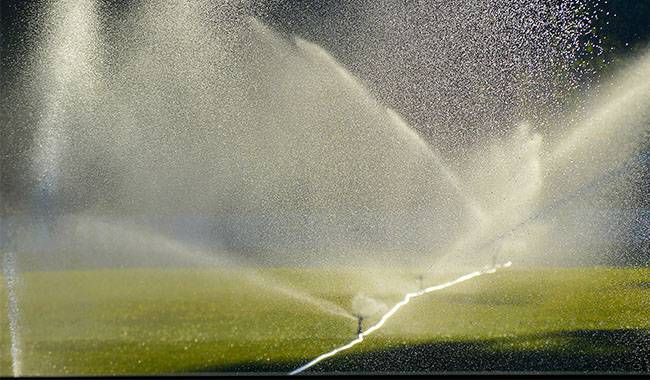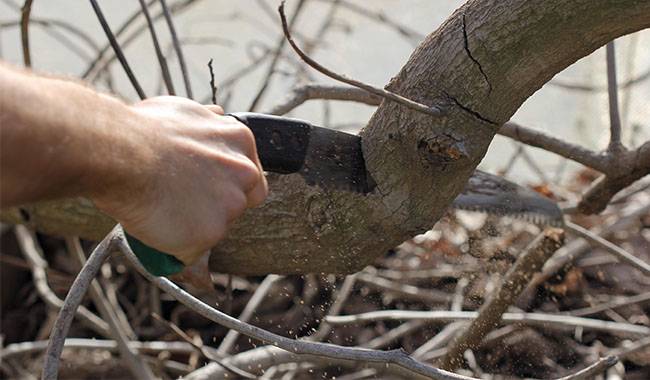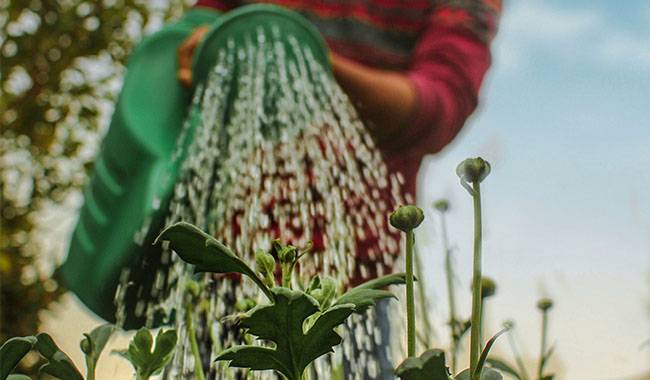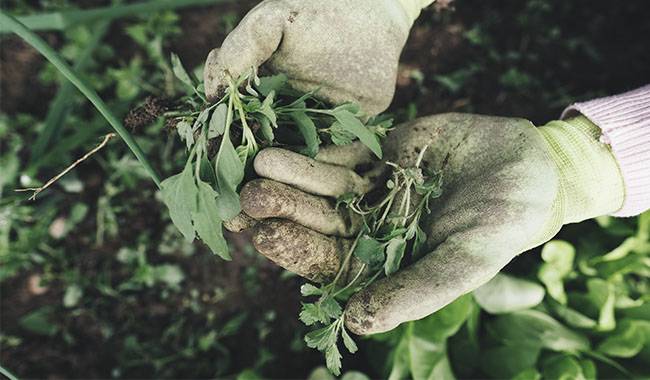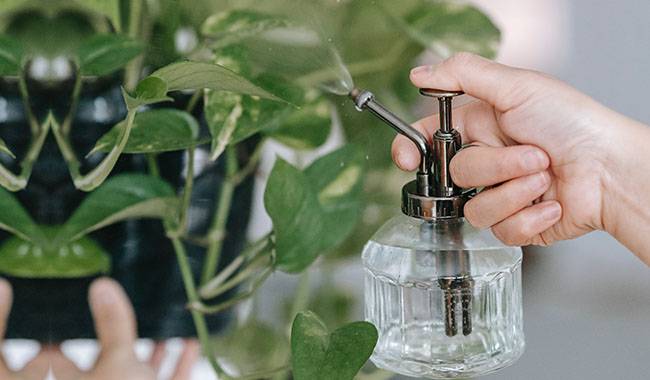
Spring and summer are busy times for gardeners. It’s time to till the soil, kill weeds, feed, water, and protect garden crops from pests and diseases. The chemical industry produces a vast array of different products to help growers with the goal of feeding and protecting. But while helping plants, these chemicals often lead to human poisoning, followed by poisoning and subsequent disease, sometimes quite severe.
The search for new forms of protection has led to the development of biological agents based on fungal and bacterial effective microorganisms (EM). Their distribution and use are increasing. But they are not always effective, not because of the particular biological agent, but because of the conditions under which they “work”: you need multiple applications (sometimes throughout the growing season until harvest), optimal temperatures for each biological agent, correct dilution, since increasing the concentration of the solution will dwarf the plant, not increase the yield.
As more and more private farms adopt natural types of land use, more and more gardeners are noticing the possibility of improving soil fertility and protecting plants from pests with the help of the plants themselves, without the use of chemicals. They are called natural insecticides or insecticidal plants. If used properly, they are very effective and harmless to humans. However, the harmlessness of natural insecticides is quite relative. Infusions and decoctions of toxic plants are also toxic to humans. Many natural pesticides are well known to gardeners and even cultivated as garden plants, but they are destroyed as weeds in other crops (such as dill). This article will tell you what natural pesticides are and what they are used for, and how to make your homemade pesticide.
MAIN CATEGORIES OF NATURAL INSECTICIDES
Natural insecticides can be broadly classified into 3 groups as follows.
- Crop insecticides for horticultural crops.
- Insecticides for flowering plants.
- Wild insecticidal plants.
Vegetable insecticides almost always produce phytohormones that inhibit pests, while decoctions are effective in killing pests. Garden plant insecticides include garlic, onions, celery, horseradish, hot pepper, basil, mustard, fennel, dill, parsley, caraway seeds, tomatoes, potatoes, and other crops.
Marigolds, calendula, chrysanthemums, Matthiola, nasturtium, petunia, pelargonium, lovage, sage, and other flowering crops with strong insecticidal action are planted in every dacha garden in flower beds, squares, and mixed beds. They are grown in vegetable crops to repel pests, and decoctions are effective insecticides.
The list of wild plants used as insecticides is hundreds of species. And they generally do not repel but destroy pests. Those include wormwood, creeping bitterness, celandine, elderberry, tansy, chicory root, bird cherry, tobacco, yarrow, burdock, spurge, larkspur, and others.
When selecting insecticidal plants for crop treatment, it is necessary to avoid obviously toxic plants that can negatively affect humans and useful fauna (can reach severe poisoning): hogweed, aconite, black henbane, Dalmatian (Caucasian) chamomile, common dope, Lobel’s hellebore, celandine, and others.
There are sufficient quantities of plants whose toxicity is lethal to harmful animals and does not affect human and animal health as well as useful insects (bees, bumblebees). In barns, it is better to use only preparations of non-toxic plants to avoid accidents.
THE EXPIRATION DATE OF INSECTICIDAL PLANTS
Only properly collected insecticidal plants can show their effectiveness against pests.
Insecticides are most toxic at certain stages of growth and development. In the vast majority of natural insecticides, it appears from the 2-3 leaf stage to the start of heavy flowering. The second wave of increased toxicity occurs from the time the seeds begin to mature until harvest. At the end of the growing season, the necessary substances accumulate in the roots, rhizomes, and bulbs for decoction and infusion.
The period from the end of heavy flowering to the beginning of maturation is used by the plant to accumulate substances for its own protection against pests. Therefore, decoctions and infusions of natural insecticides should not be used from the end of flowering to the beginning of seed maturation. They will be the least toxic to pests.
Natural insecticides quickly lose their toxic effect on pests because they do not accumulate in the plant and are easily washed away by rain. Repeated crop treatments are necessary, so have a decent supply of plant material. It is possible to prepare concentrates with a certain shelf life (up to 1-2 months) or dry grasses, tracts, roots, and rhizomes and use them as dry biological preparations. Working solutions are used on the day they are prepared. They should not be stored. Only healthy plants should be used to prepare infusions and decoctions. Otherwise, no protective effect will be obtained.
The dried material can be prepared in advance and sprayed on plants and soil as a powder, added to the holes and furrows when sowing seedlings and planting seeds.
RULES FOR COLLECTING AND STORING INSECTICIDAL PLANTS
To maintain the insecticidal properties of the plants, they should be harvested only at certain stages (see above).
Collect material in clear weather, after the dew has fallen, before the onset of high temperatures at noon, or 15-16 hours into the afternoon.
Dry, healthy ground material, roots, rhizomes, shells of onions and garlic, and bulbs in a cool place and breathable bags (not film bags) or nets. Store them in a dry room to prevent them from becoming moldy. Some plants are bundled into loose bundles and hung in a prepared drying room.
In spring and summer, working solutions are prepared or leaves, inflorescences, and flowers, stems are crushed and put in planting trenches, holes when sowing seedlings or sowing and planting seeds (flowers and leaves chrysanthemums, pyrethrum, dry celandine, tobacco dust, and others). Some of them are used to powder the soil (tobacco dust, pyrethrum powder, tansy).
If possible, prepare the concentrate from autumn onwards. It is stored in the form of a working solution until use. For example, fill a bucket (wooden, galvanized) 2/3 or completely with fallen walnut leaves and pour boiling water over it. Close it tightly. In winter, the leaves ferment. What you get is a liquid concentrate. By diluting 0.25-0.5 Gal (1-2 liters) of the concentrate in 2.5 Gal (10 liters) of water, you get a working solution to spray on plants to prevent aphids, mites, and other pests. Test the working solution on 2 to 3 plants first to avoid burning the entire crop. If necessary, add water to reduce the concentration of the working solution.
Use only healthy, fresh, and dry tomato and potato leaves. Prepare a working solution from blocks on the ground that can be used immediately to treat plants. Concentrates can be prepared and diluted into working solutions as needed (see “Preparation of Solutions” below).
It is not recommended to use working solutions of several insecticidal plants to kill the same type of pest (e.g., aphids). You can prepare tank mixtures of different insecticide plants for different pests (biters and suckers). Tanking the mixture will ease the burden on the plants and reduce the number of treatments.
VEGETABLE CROPS COMPATIBLE WITH INSECTICIDAL PLANTS
Keeping your garden, berries, or yard absolutely clean means being destined for constant treatment with Roundup. Therefore, on the one hand, weed, flowering, and vegetable plants with insecticidal properties are simply necessary when planted together. On the other hand, when insecticidal plants are used in gardens and vegetable gardens, their “good neighborliness” must be monitored. Some plant insecticides inhibit crops, or conversely, are inhibited by crops, so they are not useful in co-growing.
For example, cumin and sage are intolerant to mugwort. Mustard is good protection for peas. Celery is effective in protecting cabbage from cabbage moths. Horseradish, bush beans, coriander, and beans planted near or between potato bushes provide effective protection against Colorado potato beetle, potato moth, aphid, potato moth, and other pests.
Spray a decoction of basil, salvia, black poplar leaves, and mint on all pest-infested plants from the beginning of heavy germination through the germination stage and after flowering.
Marigolds and marigolds are ideal neighbors. They reliably protect cabbages, strawberries, crocuses, gladioli, and many other plants from nematode infestation. They can be planted within rows, between rows, and on all sides of the bed. The nematodes will disappear, but they will not die.
Slugs and snails do not tolerate the smell of parsley. Aphids do not tolerate the smell of geraniums. When planting tall flowering plants, onions and garlic will get rid of aphids. Dill, parsley, fennel, and other umbrella plants attract useful insect vectors that kill many types of pests. They are attracted to flowering plants with yellow or orange flowers and inflorescences. Useful sage next to carrots. Under fruit crops and between berry bushes, bushes propagating salvia and wormwood are useful. Their unpleasant odor repels aphids and moths, whose larvae and caterpillars can destroy a large crop. Potatoes can be protected from nematodes by following the previous crop – beans or peas.
With the right crop rotation, some treatments are unnecessary. The plants themselves will “repel” pests.
To get rid of pests in your garden and protect your vegetable crops, you need more effective measures, namely plant treatments to kill them. Treatments use decoctions, infusions, and powdered plant preparations – insecticides.
The following field and flowering plants and crops help to maintain a natural, positive balance between harmful and beneficial insects in vegetables and gardens: Melilotus officinalis, tansy, thyme, garden buckwheat, calendula, fennel, dill, lavender, Mattioli, sage, chicory, nasturtium, wormwood, caraway seeds, and many other plants.
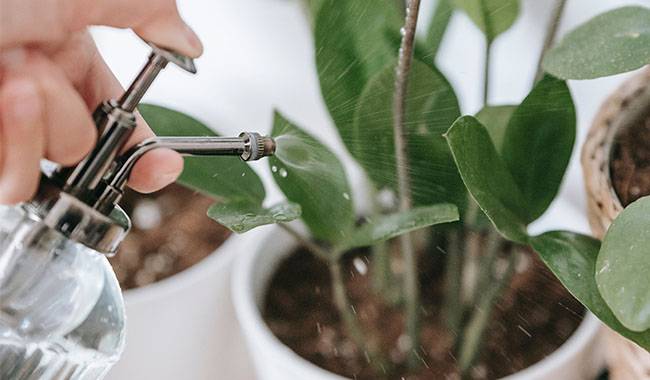
TYPES OF NATURAL INSECTICIDE PREPARATIONS
There are 3 ways to make your own natural insecticide.
Working solutions based on soap or other binders. To a prepared natural insecticide working solution of herbal insecticide, add 30-50 grams of grated laundry soap or green soap per 2.5 Gal (10 liters), which is an adhesion agent. Stir the solution until the soap is dissolved. Detergent can also be used as a binder. Laundry detergents should not be used, especially those containing bleach and other ingredients that have a negative effect on plants.
Recently, special solutions of binders, so-called surfactants, or surface-active substances have been used: EPAA-10, Liposam, OP-7, OP-10, BIO glues, and others.
Use of surfactants as binders
- fixing the insecticide solution on the leaves of vegetative plants for up to 30 days
- Prevent insecticide from dripping off waxy or smooth leaves
- Prevents rapid loss of water from the leaf surface.
When using surfactants to prepare working solutions, it is possible to extend their storage time in the refrigerator up to 1-2 weeks without losing their activity against pests.
Working solutions based on neem oil (Neem) or its components. Neem oil is a natural insecticide that effectively kills more than 400 species of insects (scale, moth larvae, cabbage caterpillars, whiteflies).
The oil itself is a biological insecticide and does not affect human or animal health. Neem oil is obtained from the above and below-ground parts of the Indian Margosa (Neem Tree) tree, also known as the Indian tulip tree.
To make an oil-based insecticide solution, dilute 30 ml of oil in a 2.5 Gal (10 l) solution of warm herbal insecticide, add 30 ml of washing solution, mix well and spray on the plants.
Insecticide solutions can be prepared using neem oil with lavender and rosemary essential oils. Use 50-60 ml of neem oil and 5 ml of essential oil per 2 Gal (8 liters) of warm water, add 30 ml of any detergent and mix thoroughly. Use a fine sprayer when spraying.
Keep shaking the solution in the container so that the oil and water do not separate. Spray the working solution on all plants in the garden every 5-7 days for 2-5 weeks. The solution kills larvae and adults of pests. The solution is applied before the crop blooms.
Neem oil or its component Azadirachtin and other special insecticidal solutions based on neem oil can be purchased from herb stores, pharmacies, specialized supermarket departments, and other retail outlets.
Pyrethrum-based powder insecticides. The pyrethrum is also known as Dalmatian chamomile. The flower is also known as Caucasian or Persian chamomile, and some taxonomists refer to it as chrysanthemum. True chrysanthemums are also natural insecticides. All pyrethrums contain pyrethrins, which cause muscle paralysis in insects. It should be noted that the action of pyrethroids is short-lived, and if the powder is not concentrated enough and fumigated for a long time, the paralysis will subside, and the insect will remain alive. Therefore, when applying pyrethroids, it is important to follow the recommendations strictly. Pyrethroid powders and solutions kill ants, mites, various flies, and other gnawing (root and leaf) pests. The chemical industry produces a biological agent called Inta-Vir. Many gardeners claim it to be mildly effective. In most cases, the low toxicity to pests is due to its inappropriate and untimely application.
Use pyrethrum as a powder for pollination, dust for the soil, and as an additive for planting and seeding. During the growing season, you can treat the soil around plants, as well as manure and compost for fly control.
Collect all types of daisies during the flowering season and dry them into loose bouquets. Grind the dried inflorescences into a powder. The finer the powder, the more effective the remedy will be. Treat with powder from a sprayer, or prepare an insecticide solution. Add 50-60 g of powder to 2 Gal (8 l) of warm water with 6-8 ml of sesame oil or up to 10 ml of detergent. Stir the mixture and soak for 3-4 hours. Spray the plants in cool weather. In hot weather, pyrethroids will break down quickly and become ineffective.
PREPARATION OF DECOCTIONS AND INFUSIONS OF NATURAL INSECTICIDES
Decoctions and infusions are prepared using the above-ground parts of the plant, fresh or dried, collected before flowering or from the time the seeds begin to ripen until harvest. The underground parts are always harvested in the fall and can also be used fresh or dried in the sun. Here are some examples of hot and cold remedies and infusions. Decoctions and infusions using other insecticidal plants can be made with the quantities of ingredients listed above.
To prepare a 2.5 Gal (10 l) working solution – insecticide – from the fresh above-ground parts of the plant by the hot method, you finely chop 300-400 g pieces of the plant, pour them into a bucket full of boiling water and hold it for 4 hours to a few days. Sometimes the mixture is cooked under the lid for 20-30 minutes on low heat. The cooled solution is filtered through a coarse and fine sieve and sprayed with 1-2 plants.
If no plant burns appear within a few hours (sometimes you have to wait a day), spray the entire crop with the prepared solution. If leaves appear attached or spotted, add 0.5-0.8 Gal (2-3 liters) of water to the solution (to reduce the concentration of the solution). When preparing the solution from dry matter, the amount should be reduced by half.
It is possible to treat all plants for biting pests with a decoction of celandine. 400-500 g of fresh above-ground parts of celandine or 200-250 g of dried ones are poured into water and cooked under a lid for 20-30 minutes on low heat. Cool, strain, and spray the plants. Repeat the spraying after 4-5 days. Working with celandine should be done with great care. All parts of the plant are poisonous. Caution. It is best not to use poisonous plants at home.
Extracts or infusions can be made cold. For concentrates, the mixture is prepared as follows. 2.5 Gal (10 l) of water with 500 g of yarrow, 250 g of dandelion, and salvia, you can add 250-300 g of rooted gooseberry, 250-300 g of Nettle. The mixture of herbs is adhered to, stirred for 5-7 days.
The resulting concentrate is filtered. The 0.25-0.5 Gal (1-2 l) concentrate is diluted in 2.5 Gal (10 l) of water, and the culture is sprayed. You can prepare another formulation but should choose a collection to cover as many different types of pests as possible.
Add soap or other binders to all types of decoctions and infusions before treating the plants.
Some plants can be used as live insecticides for intercropping. For example, the root excretions of the Taj Mahal or Marigold can protect the root systems of vegetables from nematode infestation.
Plant 2-3 plants per 11 square feet between vegetable crops or between rows. You can grow a flower bed with marigolds. Harvest them in the fall, dry them and use them for the next year’s decoction.
A cold infusion can be prepared from an insecticide plant.
Nettle 1.7-2.3 Lb (0.8-1 kg), collected before flowering, finely chopped, poured into 2.5 Gal (10 Lb) of water, and persisted for 5-8 days. The ferment was filtered and added to 1.3-2 Gal (5-8 Lb). Used against aphids.
Prepare an infusion of burdock before the summer (flight) of whiteflies, moths, and small vegetable moths. Fill 1/3 of a bucket with fresh burdock leaves and pour the water into it. Infuse for 3-4 days. Filter and treat cabbage every 2-3 days for 3 weeks.
Infusion with the roots of Marsupial can kill bees, aphids, and mites. Grind 250-350 g of the root finely and pour it into 2.5 Gal (10 l) of water. Soak for 3-4 hours and filter. Treat plants 2-3 times in 3-4 days.
From general recommendations. Before flowering, treat garden and horticultural crops with a working solution every 5-7 days, sometimes more often. During the flowering period, do not treat so as not to interfere with pollination. Starting in the second half of the warm season, treat half as often as the fruit begins to germinate and up to harvest. Decoctions and infusions of toxic herbs are best avoided in large and small sheds.
More related information about pests and diseases




